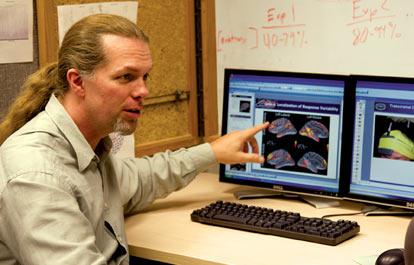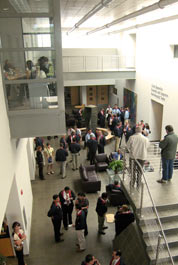

University of Minnesota and Minneapolis VA //
Along with MGH, the Center for Magnetic Resonance Research (CMRR) at UMN is a premier center for MRI research and development. The Minneapolis VA Brain Sciences Center (BSC) focuses on MEG development using equipment purchased using funds from The Mind Research Network.
- 7.0 T Siemens TIM ultrahigh field human head-only MRI with 32 RF channel capability
- 4.0 T Oxford magnet with Varian Inova console
- 3 T Siemens TIM Trio whole body clinical MRI
- 9.4 Tesla Magnex Scientific 31cm bore
- 9.4 Tesla Magnex Scientific Limited 65cm bore
- 4.7 Tesla Oxford 40cm
- 248-channel Magnes 3600 WH MEG system
The University of Minnesota Department of Psychiatry collaborates with CMRR and BSC and provides a complete clinical infrastructure.
S. Charles Schulz, M.D. – University of Minnesota Site PI
Dr, Shulz is a professor and head of the Department of Psychiatry at the University of Minnesota and directs the MRN’s schizophrenia database program. While a clinical associate at the National Institute of Mental Health (NIMH), he became interested in clinical trials for patients with schizophrenia, as well as research in family issues. In 1980, he moved to the Medical College of Virginia where he started its Schizophrenia Program. Three years later, he became medical director of the Schizophrenia Module at the University of Pittsburgh before moving to the NIMH extramural program where he contributed to the National Plan on Schizophrenia Research. Along with Dr. Carol Tamminga, he started the biennial International Congress on Schizophrenia Research. His research interests are MRI imaging in adolescents with schizophrenia and bipolar illness, and he has been active in clinical trails with antipsychotic medications.
Kamil Ugurbil, Ph.D. – University of Minnesota Site PI
Dr. Ugurbil is a professor in the Departments of Radiology, Neurosciences, and Medicine, and holds the McKnight Presidential Endowed Chair of Radiology at the University of Minnesota. He is also the director of the Center for Magnetic Resonance Research (CMRR), one of the MRN’s partner sites. After receiving his Ph.D., he worked at AT&T Bell Laboratories before joining Columbia University as an assistant professor. In 1982, he moved to the University of Minnesota where he started the in vivo magnetic resonance imaging and spectroscopy research effort, which ultimately led to the creation of the CMRR. He develops ultra-high field magnetic resonance methodology for MR imaging and spectroscopy to provide high-specificity and high-resolution mapping of brain functions.

